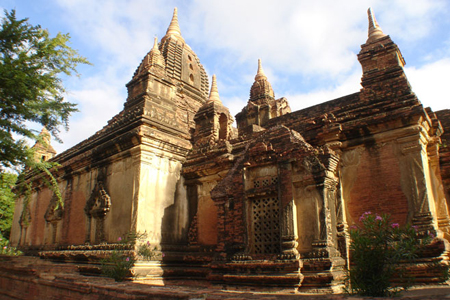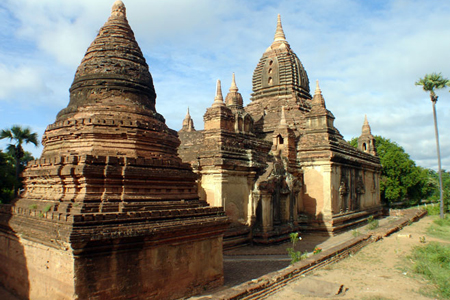Completed 1112-1113
Merit of Prince Raja Kumar, son of King Kyansittha (r. 1084-1112)
Prince Raja Kumar was the son who was passed over for the throne in favour of his nephew, and he became a legendary figure for three things: the graciousness with which he accepted his fate, building this beautiful temple and the four-sided stone pillar he had inscribed in four languages Pali, Pyu, Mon and Bamar to dedicate the temple.
The Pali text is in verse and the other three in elegant prose. The stone was discovered in the compound of a nearby small pagoda the MyaZedi, and is also incorrectly called the Mya Zedi Stone. The original is in the Bagan Archaeological Museum while a copy is at the Mya Zedi Pagoda.

It was only through this pillar that modern scholars learnt how to read the Pyu language. Although he did not belong to the list of kings his prestige in history is higher than some members of the dynasty who did rule in Bagan.
The temple is considered to have the best stucco work as well as some of the most beautiful paintings. They have been restored so the colours shine brilliantly. Most of the scenes are of Buddhist content with some Hindu gods, Bodhisattvas, dragon-serpent Naga in human form, demons, birds, guardian celestials etc. The few perforated windows give little light, perhaps to preserve the paintings.


